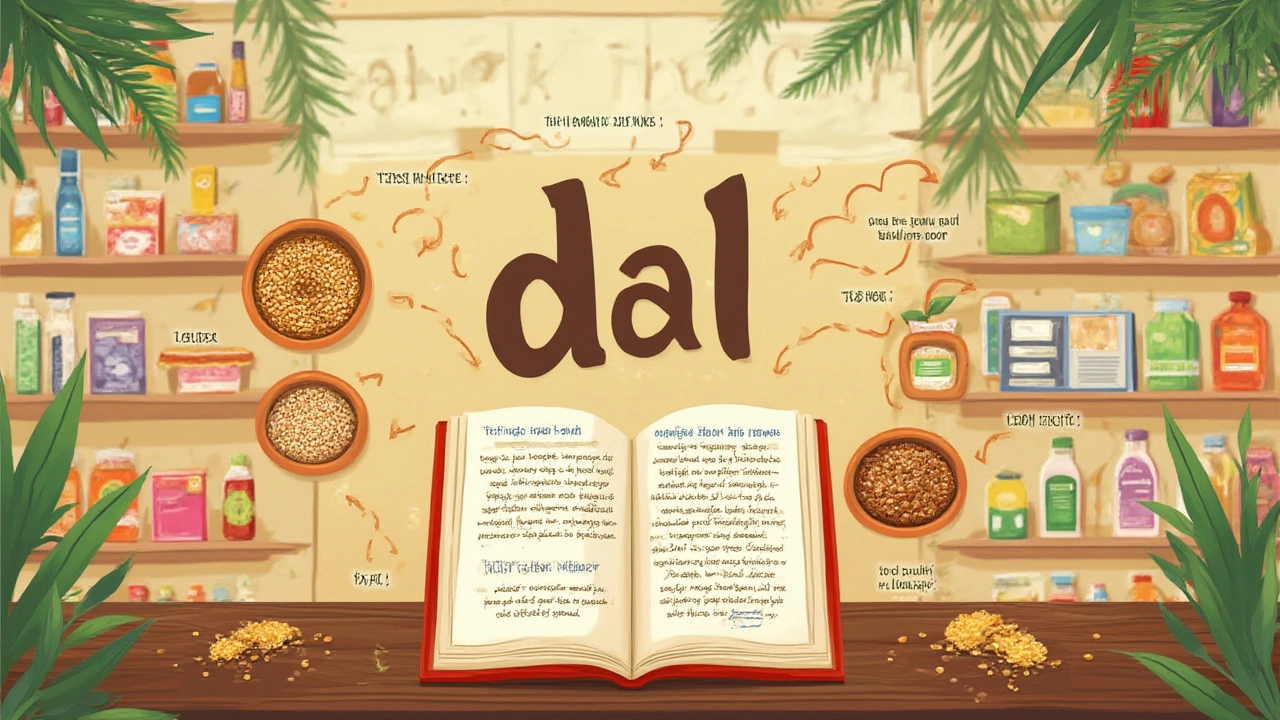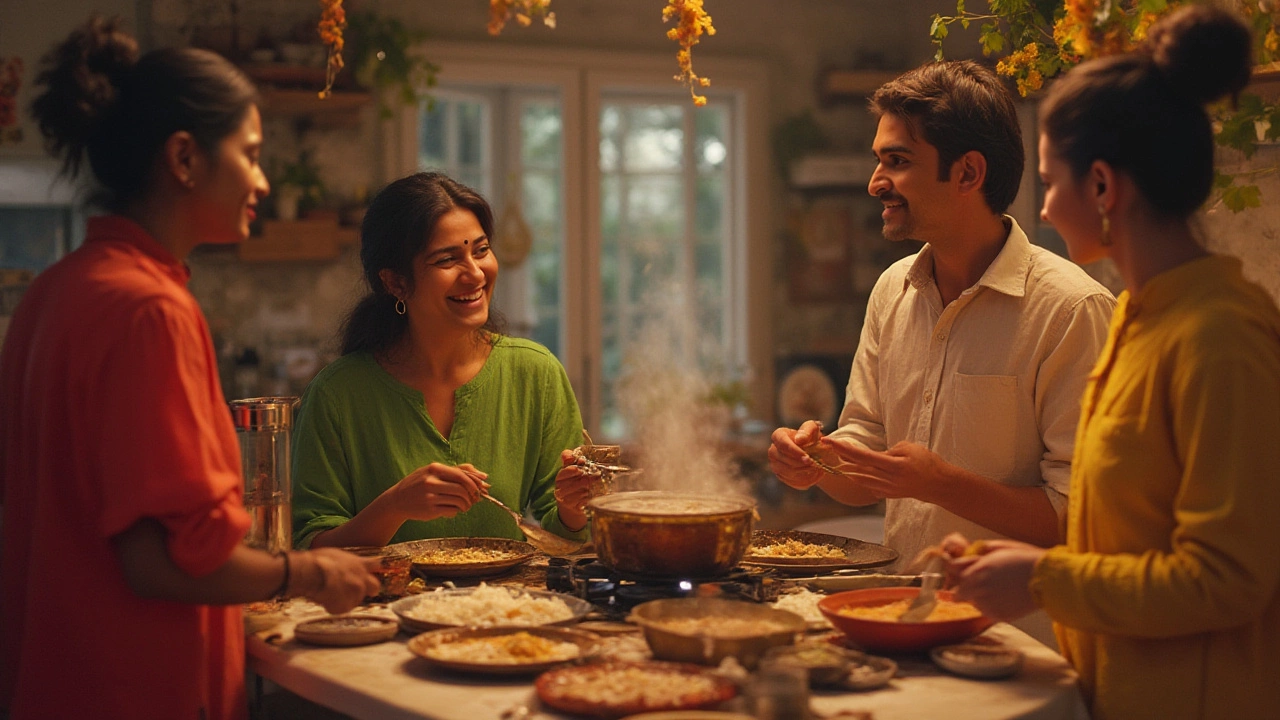1 Aug 2025
- 0 Comments
At first glance, the word “dal” might feel as familiar as a thunderstorm on a dry desert day when you land in an American supermarket. You’d hustle through various aisles, scan the shelves… and not spot a single packet labeled “dal.” Yet, every Indian kitchen can’t live without it. So, where did dal hide in the US grocery landscape, and what do Americans even call it? Let’s peel this apart, one spoonful at a time.
Why Dal Isn’t Just Dal in America
Ask any American about dal, and most will blink, puzzled. For them, the word “dal” doesn’t pop up in childhood cookbooks or family potluck stories. Instead, they know the core ingredient by a different and much more clinical name: lentils. That’s right—what people across India call “dal” are essentially a rainbow of pulse varieties grouped under “lentils” in the US. Walk into most American supermarkets and you’ll see shelves lined with dried beans and maybe two or three types of lentils. There are brown, green, red, and sometimes the tiny black ones, but those names refer to the intact seed or split pulses, not the cooked, comforting stew millions call dal.
Dal isn’t just a name for a pulse, though. In India, dal doubles as both the ingredient and the dish itself. That's a big cultural difference. Americans won’t usually walk into a diner and ask for “some lentils.” If you see lentils listed on a menu, it'll be as “lentil soup” or, in fancier places, “French green lentil salad.” The dish concept of dal as thick, spiced comfort food is largely missing in US culinary thinking—unless you’re near a city with Indian restaurants, and even then, “dal” is stuck on the “exotic” section of the menu.
Here’s a funny detail: Indians buy chana dal, toor dal, moong dal, and masoor dal by those same names, often using them interchangeably to describe both the lentil and what they’ve cooked. Americans say “red lentils” for peeled masoor dal, “yellow split peas” for toor dal or sometimes chana dal, though yellow split peas and toor dal aren’t identical. The overlap and confusion don’t end there. Chickpeas, which Indians know as kabuli chana or chhole, are distinct from chana dal (split chickpeas), but to the Western grocer, “chickpeas” or “garbanzo beans” covers the lot—even though the split version sits ignored on the shelf.
For context, the United States is actually the world’s largest producer of lentils after Canada and India. States like North Dakota, Montana, and Washington pump out almost half a million metric tons every year. Yet, the average American eats only about 1.5 pounds of lentils per year, according to the USA Dry Pea & Lentil Council. That’s peanuts compared to the roughly 20-30 pounds of dal an Indian family might run through in a year. The gap is as obvious as a missing masala dabba in a Texan kitchen.

Dal in American Cooking: Where Does It Fit?
So, what happens when Indian dal sneaks into American kitchens? It has been making its way in, quietly but surely. Immigrants have always packed a bag of toor dal or moong dal in their suitcases, stocking the pantries of countless homes from New York to San Francisco. Food bloggers like Priya Krishna and cookbooks like Madhur Jaffrey’s have also begun teaching a wider US audience how to turn those dry little seeds into a cozy, flavorful stew—the essence of dal. Yet still, most American home cooks have no idea how versatile these pulses can be.
Let’s talk names again. If you’re searching for “dal” in your average supermarket, try looking for these:
- “Red Lentils” (Masoor dal)
- “Yellow Split Peas” (Closest to toor dal or chana dal, but not exactly the same)
- “Green Lentils”
- “Brown Lentils”
Still, there’s a catch—true Indian dal varieties (like urad, mung, and toor, split or whole) often appear only in Indian or South Asian grocery stores. Amazon and specialty food shops do stock authentic dals now, showing just how much the demand is growing—not just from the Indian diaspora but from Americans diving into plant-based eating or new flavors thanks to TikTok trends.
Here’s where it gets interesting. Most Americans see lentils as a healthy thing. Suddenly plant-based eating is on fire—did you know in 2024, the Good Food Institute reported that plant-based food sales in America jumped by 9% compared to the previous year? Lentils are loved for their protein, low fat, and hearty texture, putting them on lists for heart health, blood sugar control, and affordable protein. Americans are adding them to salads, stews, grain bowls, and “meatless Monday” recipes—just often without the magic of tarka or tadka, the finishing spiced oil that transforms dal from “lentil soup” into a taste of home for anyone craving Indian comfort.
But here’s the kicker—if you want a real dal experience, you either need to visit a good Indian restaurant, make friends with an Indian family, or learn to recognize those split dals on store shelves for what they really are. American cookbooks are catching on—authors like Nik Sharma and Meera Sodha dedicate entire sections to different dals, using the Indian names and techniques, teaching people that dal is both ingredient and dish, and making “dal” a more familiar word than ever. Still, there’s a way to go before dal climbs to the same everyday status as mac and cheese or chicken soup in American menus.

A Handy Guide: How to Buy and Cook Dal in America
If you’re new to this, don’t worry—you won’t need a secret password for the Indian grocery or a crash course in Hindi. The trick is learning to match Indian names with American labels. Here’s a table to help you swap dal names with what you can actually buy in a typical US grocery store:
| Indian Name (Dal) | US Store Label | Common Uses |
|---|---|---|
| Masoor Dal (Red Lentils) | Red Lentils | Soups, stews, dal fry |
| Toor Dal (Arhar/Tuvar) | Yellow Split Peas* | Dal tadka, sambar |
| Chana Dal | Split Chickpeas | Chana dal fry, desserts |
| Moong Dal | Yellow Mung Dal*/Split Mung Beans | Khichdi, dal soup |
| Urad Dal | Split Black Gram | Dal makhani, dosa batter |
| Rajma | Red Kidney Beans | Rajma curry |
*Not always exact—yellow split peas are close to toor dal, but not identical.
Want to try making dal at home, American-style? Here are some easy tips if you’re starting with supermarket “lentils”:
- Don’t skip rinsing. Wash lentils under cold water until it runs clear—gets rid of dust or grit.
- Pre-soak if time allows. While most lentils don't need a soak, split chickpeas or urad might cook faster when pre-soaked.
- Spice it up. A basic American lentil soup is fine, but if you add turmeric, cumin, garlic, and ginger, you’ll edge closer to a real dal.
- Finish with a tarka. This is the game changer—sizzle mustard seeds, cumin, or dried red chilies in oil, then pour it over the cooked dal. Instantly aromatic and addictive.
- Play with coconut milk or tomatoes. These add creaminess or tang and help you riff on South or North Indian styles.
Cooking times depend on type: red lentils turn soft in 15-20 minutes, while whole black gram or chickpeas need up to an hour—or a pressure cooker for quicker results. Don’t stress if your first try is mushy; dal is forgiving, and every Indian home has its own “right” way. Food is about comfort, not perfection.
So, back to the main question: what do Americans call dal? In stores, it’s “lentils”—the ingredient, not quite the dish. On menus, you might see “lentil soup,” but “dal” is catching on thanks to Indian restaurants and the power of food-sharing online. For most Indian families in America—and curious cooks everywhere—the best tip is to hunt down real dal varieties at South Asian stores or online. Trust me, once you soak up the flavor, it’s hard to go back.
